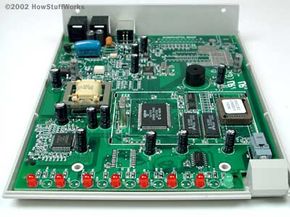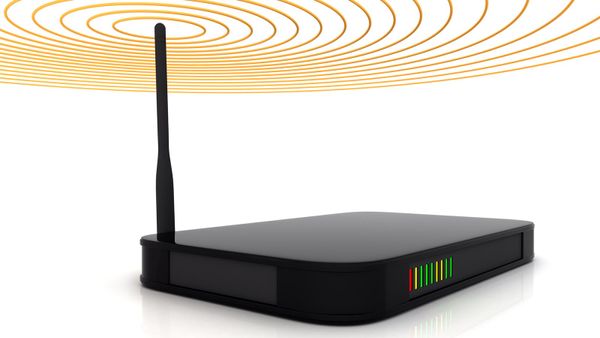The word "modem" is a contraction of the words modulator-demodulator. A modem is typically used to send digital data over a phone line.
The sending modem modulates the data into a signal that is compatible with the phone line, and the receiving modem demodulates the signal back into digital data. Wireless modems convert digital data into radio signals and back.
Modems came into existence in the 1960s as a way to allow terminals to connect to computers over the phone lines. A typical arrangement is shown below:
In a configuration like this, a dumb terminal at an off-site office or store could "dial in" to a large, central computer. The 1960s were the age of time-shared computers, so a business would often buy computer time from a time-share facility and connect to it via a 300-bit-per-second (bps) modem.
A dumb terminal is simply a keyboard and a screen. A very common dumb terminal at the time was called the DEC VT-100, and it became a standard of the day (now memorialized in terminal emulators worldwide). The VT-100 could display 25 lines of 80 characters each. When the user typed a character on the terminal, the modem sent the ASCII code for the character to the computer. The computer then sent the character back to the computer so it would appear on the screen.
When personal computers started appearing in the late 1970s, bulletin board systems (BBS) became the rage. A person would set up a computer with a modem or two and some BBS software, and other people would dial in to connect to the bulletin board. The users would run terminal emulators on their computers to emulate a dumb terminal.
People got along at 300 bps for quite a while. The reason this speed was tolerable was because 300 bps represents about 30 characters per second, which is a lot more characters per second than a person can type or read. Once people started transferring large programs and images to and from bulletin board systems, however, 300 bps became intolerable. Modem speeds went through a series of steps at approximately two-year intervals:
- 300 bps - 1960s through 1983 or so
- 1200 bps - Gained popularity in 1984 and 1985
- 2400 bps
- 9600 bps - First appeared in late 1990 and early 1991
- 19.2 kilobits per second (Kbps)
- 28.8 Kbps
- 33.6 Kbps
- 56 Kbps - Became the standard in 1998
- ADSL, with theoretical maximum of up to 8 megabits per second (Mbps) - Gained popularity in 1999
(Check out How DSL Works and How Cable Modems Work for more information on the progression of modem technology and current speeds.)




